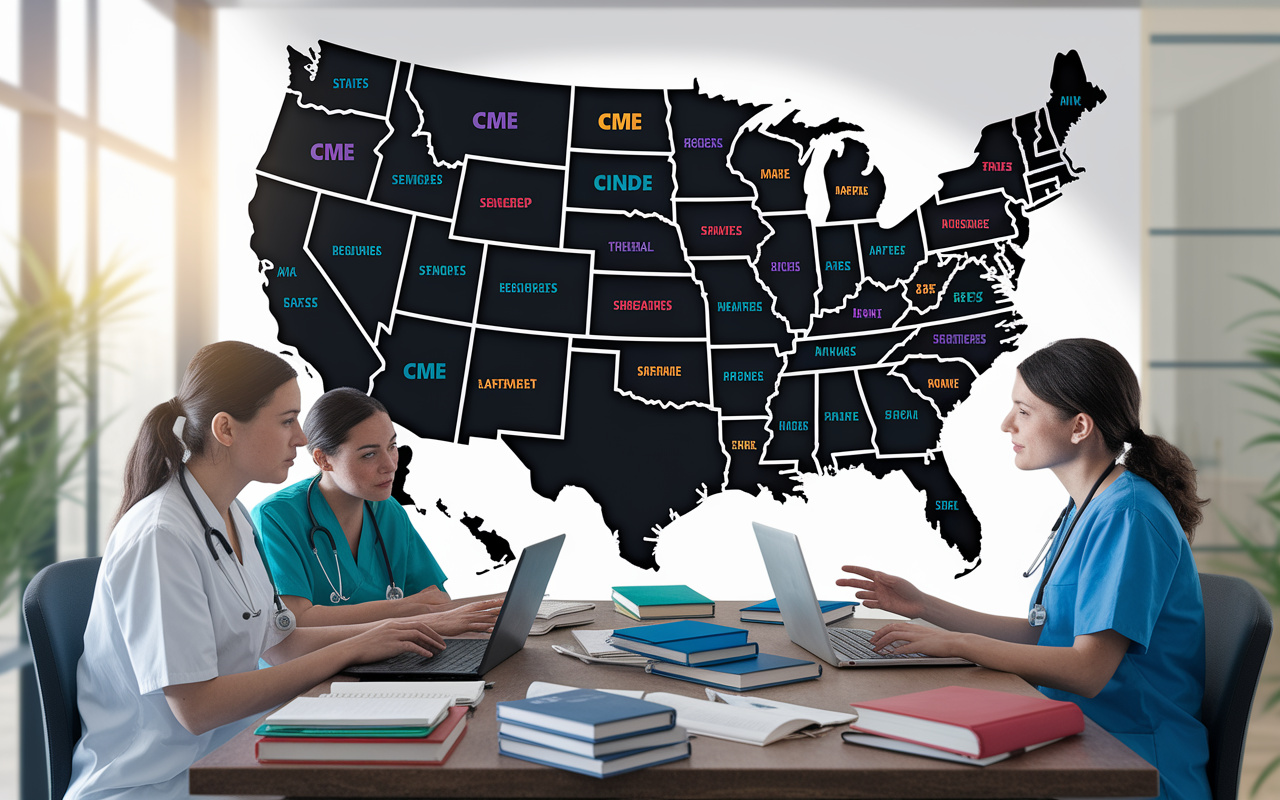Navigating CME Requirements: Tips for Busy Healthcare Professionals

Continuing Medical Education (CME) is essential for healthcare professionals who strive to maintain their competency in an ever-evolving field. With the rapid pace of medical advancements, accessing new knowledge and skills is necessary for providing quality patient care while adhering to licensure requirements. However, busy healthcare professionals often grapple with the challenges of balancing patient care, administrative tasks, and their CME obligations. This article aims to provide practical tips to help healthcare professionals effectively navigate CME requirements without compromising their day-to-day responsibilities.
Understanding the Importance of CME
Before delving into the navigation tips, it’s important to comprehend why CME is a cornerstone of professional medical practice. Here are a few reasons:
- Regulatory Compliance: CME is mandated by many state licensing boards to ensure that practitioners remain updated on medical practices and innovations.
- Enhanced Patient Care: Continuous learning leads to the incorporation of the latest evidence-based practices, ultimately improving patient outcomes.
- Professional Development: Engaging in CME courses contributes to the professional growth of healthcare providers, allowing for the advancement of their careers.
Recognizing CME Requirements
Different organizations and specialties often stipulate varying CME requirements. Typically, these may include:
- Total Credits: Healthcare professionals are usually required to complete a specific number of CME hours within a defined time frame, often ranging from 25 to 50 hours over two years, depending on the profession and specialty.
- Type of Activities: Activities can encompass online courses, web-based seminars (webinars), in-person workshops, journal article assessments, and self-directed learning modules.
- Documentation: Keeping records of completed CME activities, including certificates, transcripts, or a summary of educational content, is vital for compliance checks.

Researching State-Specific Requirements
It's essential to be aware that CME requirements vary from state to state. Healthcare professionals should visit their state medical board's website to find detailed criteria and trustworthy resources to stay compliant.
Tips to Navigate CME Requirements Effectively
1. Create a CME Plan
Establishing a structured plan can simplify your CME journey. Here’s how to approach it:
- Set Goals: Define what competencies you want to enhance or areas to specialize in. Having a target clarifies your direction.
- Schedule Time: Allocate specific professional development time slots in your weekly routine. This could either be set times on specific days or dedicated hours during a week where you can focus on CME.
- Prioritize Activities: Rank CME activities based on relevance to your practice and personal interest. Focus on those with the greatest immediate benefit.
2. Leverage Technology
The technological advances we encounter daily can be utilized effectively for CME participation:
- Online Platforms and Apps: Utilize CME platforms like Medscape, DynaMed, or UpToDate, which provide both learning resources and tracking capabilities.
- Podcasts and Webinars: For busy professionals, podcasts and on-demand webinars can be a lifesaver. Listen while commuting, exercising, or performing routine tasks.
- Learning Management Systems (LMS): Utilize your organization’s LMS, if available, which may offer a variety of on-demand CME options.
3. Participate in Group CME Activities
If time is short, leverage existing interactions at your workplace:
- Group Learning: Engage in knowledge-sharing sessions or journal clubs with colleagues. Not only does this foster teamwork, but it also allows for diverse perspectives on learning.
- Team Workshops: Organize group CME workshops or lunch-and-learns that offer mutual learning opportunities while nurturing relationships within your team.

4. Choose Relevant and Engaging Topics
Select courses that resonate with your clinical practice or interest. Here are some tips:
- Stay Updated: Regularly check for upcoming courses relevant to your area of practice.
- Variety: Incorporate different types of learning modalities to prevent boredom. Alternate between webinars, hands-on workshops, and independent study.
5. Document and Track Your CME Activities
Having a reliable tracking system is crucial for staying organized:
- Keep a Log: Maintain a dedicated folder or digital file for CME transcripts and certificates.
- Monitoring Systems: Tools like “MyCME” allow you to input and track all completed activities contributing toward your credits.
6. Avoid Procrastination
Time tends to slip away, especially for busy professionals. Some strategies to overcome procrastination include:
- Break It Down: Divide larger courses into smaller sections to make the content more digestible.
- Accountability Partners: Pair up with a colleague and check in on each other’s progress regularly. A support system can motivate you to remain committed.
7. Utilize Employer Resources
Many healthcare organizations provide funding or resources for CME activities. Engage with your institution:
- Funding Opportunities: Investigate if your employer covers the expense of specific CME courses or conferences.
- In-House Training Sessions: Participate in any in-house training or opportunities presented by HR or department heads.

Conclusion
Navigating CME requirements is pivotal for maintaining the competency and professionalism of healthcare practitioners. Given the demands of the profession, strategic planning, utilizing technology, and active participation in group activities can help busy professionals meet their CME obligations without feeling overwhelmed. With the proper approach, achieving your CME goals can be an achievable aspect of your ongoing medical education.
Frequently Asked Questions (FAQs)
Q: How do I know what CME requirements I need to fulfill?
A: Check your state medical board's website for specific CME requirements. Each state may have different credit hour needs and types of acceptable activities.
Q: Can I fulfill CME requirements with online courses?
A: Yes, many states allow online courses as valid CME credits. Always ensure to select accredited providers to meet your state’s standards.
Q: Are there any financial assistance programs for CME courses?
A: Some employers and organizations offer funding for CME activities. Consider reaching out to your HR department for available resources.
Q: Do I need to keep records of my CME activities?
A: Yes, maintaining documentation of your completed CME activities is essential for audits by licensing boards.
Q: How can I balance my daily responsibilities while completing CME?
A: Create a structured CME plan, schedule regular learning time, and participate in collaborative CME activities with colleagues to ease the burden.
By taking these steps, you can meet your CME obligations effectively while maintaining a fulfilling practice in medicine. For more information on related topics, check out our article on The Ultimate Guide to CME Requirements for Healthcare Professionals for additional insights and guidance.

SmartPick - Residency Selection Made Smarter
Take the guesswork out of residency applications with data-driven precision.
Finding the right residency programs is challenging, but SmartPick makes it effortless. Our AI-driven algorithm analyzes your profile, scores, and preferences to curate the best programs for you. No more wasted applications—get a personalized, optimized list that maximizes your chances of matching. Make every choice count with SmartPick!
* 100% free to try. No credit card or account creation required.












